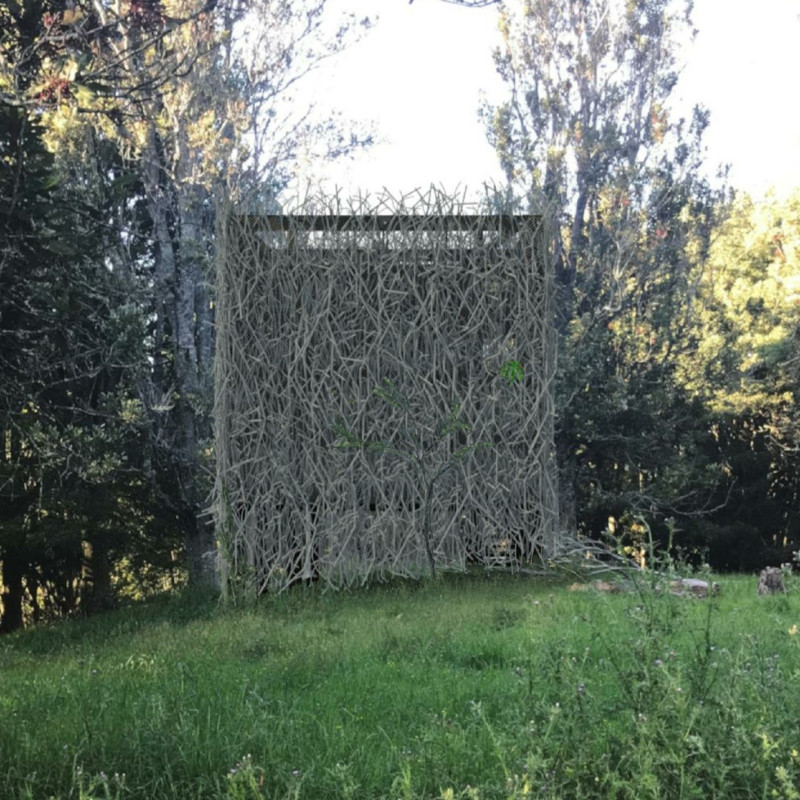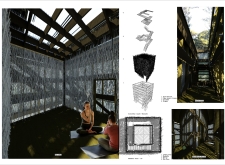5 key facts about this project
The Kahu Tane project is an architectural expression set within a forest ecosystem, designed to create a connection between cultural heritage and the natural environment. It draws inspiration from the kiwi bird, which plays a vital role in Māori mythology, representing themes of sacrifice and protection. The structure serves as a place for meditation, inviting individuals to reflect and engage with the surrounding landscape and their cultural roots.
Curtain Wall Integration
A significant aspect of the design is the curtain wall. This element acts as both a boundary and a link to the natural world outside. It features materials gathered from the forest floor, like feathers, twigs, and branches. This integration allows the wall to become a part of the environment, adapting as it interacts with nature over time. The living wall emphasizes the project's aim to blend architecture with ecology.
Cultural Context and Symbolism
At the heart of the design lies the idea of the cloak, embodied by the kahu haruhuru. These cloaks, traditionally made from bird feathers, symbolize warmth, identity, and protection. The structure reflects this notion, providing a safe and inviting space that mirrors the kiwi’s connection to the forest floor. The architecture embodies cultural narrative, enhancing the visitor's experience and understanding of their heritage.
Material Characteristics and Structural Elements
Materials selected for the structure include chain link fencing, which offers crucial support for the curtain wall while allowing for the integration of organic materials. Clear corrugated roof panels provide shelter from rain while maintaining a connection with the sky. Pressure-treated wood foundation piers and concrete spread foundations provide stability and durability, key factors for long-lasting construction.
At the core of Kahu Tane, the meditation space encourages quiet reflection and a sense of peace. Natural light pours through the curtain wall, creating shifting patterns throughout the day. Shadows dance on the floor, inviting contemplation. This design aspect enriches the user experience and deepens the connection to the forest, blending the built environment with the living landscape.






















































